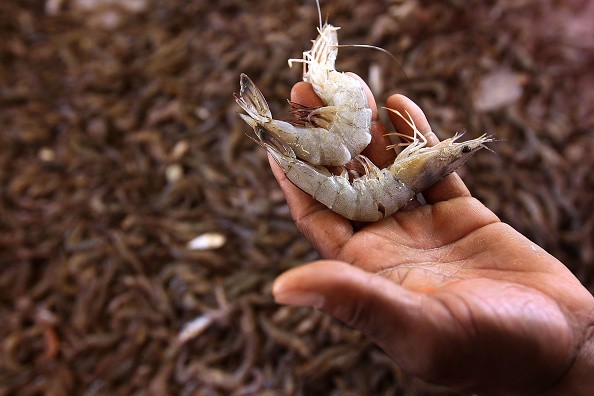Marine biologists from the Smithsonian Tropical Research Institute (STRI) have discovered several new species in Panama's Coiba National Park, including new genera and a new species of shrimp.
The team was led by STRI postdoctoral fellow Matthieu Leray, together with two zoologists and STRI research associates Arthur Anker and Paulo Pachelle. The zoologists are both based in Brazil and specialize in identifying decapod crustaceans - shrimps, hermit crabs, crabs, and lobsters.

Strianassa lerayi and More Discoveries
One of the new species discovered in Coiba National Park is a mud shrimp in the Laomediidae family, Strianassa Ierayi. Anker chose the name in honor of both the Smithsonian in Panama, as well as his friendship with Leray.
The first part of its generic name is from the abbreviation of the Smithsonian Tropical Research Institute, STRI. Meanwhile, the latter part was borrowed from a close relative, the morphologically similar genus Axianassa. "Anassa" is derived from the old Greek word for "queen." Therefore, Strianassa roughly translates to "Queen of STRI."
Leray said that Anker was able to identify one new shrimp species, as well as three new genera of the sea creature after a week of collecting in Coiba National Park, located in Panama's southwestern coast. "This is a phenomenal contribution to our knowledge of just one group of organisms," Leray added. "We are in the process of identifying what we found and will announce more new species soon."
The new mud shrimp was found under a rock while snorkeling in the waters inside the Panamanian protected zone. According to the researchers, the only known specimen was found a few kilometers from the latest Smithsonian Tropical Research Institute facility on the island.
Coiba Shrimps Described by Anker
Aside from the Strianassa Ierayi, the STRI team in Coiba discovered other species of shrimp since 2019, also described by Arthur Anker:
Unesconia coibensis
A new genus for palaemonid shrimps, Unesconia, was established to accommodate the "peculiar, small, presumably sponge-associated species" that is the Unesconia coibensis. Several specimens of the new sponge-like shrimp were found in the shallow waters in the Coiba archipelago. The genus name, Unesconia, is taken from UNESCO, who declared Coiba a World Heritage Site back in 2005.
Pachelpheus pachyacanthus
A new genus was also established to accommodate the new alpheid shrimp, Pachelpheus pachyacanthus. Specimens for the new burrow-dwelling shrimp were discovered in the Las Perlas Archipelago, as well as in the Panamanian Pacific coast. The genus was named after Anker's friend and collaborator, Paulo Pachelle. In the description report for the new species, Anker listed thirteen main morphological traits of the new genus.
Triacanthoneus blanca
Another species of alpheid shrimps also found in the waters of Panama. The species name was taken from the name of Blanca Figueroa, a former postdoctoral member in STRI, under Aaron O'Dea's laboratory team.
"We are thrilled by the potential of our newest research station on Coibita," said Oris Sanjur, STRI acting director. He noted that the easter Pacific remains mostly unexplored. To bring more zoologists, marine biologists, and taxonomists to Panama, Bocas del Toro Research Station director Rachel Collin has started a program called "Training in Tropical Taxonomy."
Sanjur noted: "In the past ten years, they have identified more than 75 new species, many of which are only found in Panama."
To have a glimpse of the largely unexplored flora and fauna in Panama, check out the STRI BioBlitz video below:
© 2025 ScienceTimes.com All rights reserved. Do not reproduce without permission. The window to the world of Science Times.












